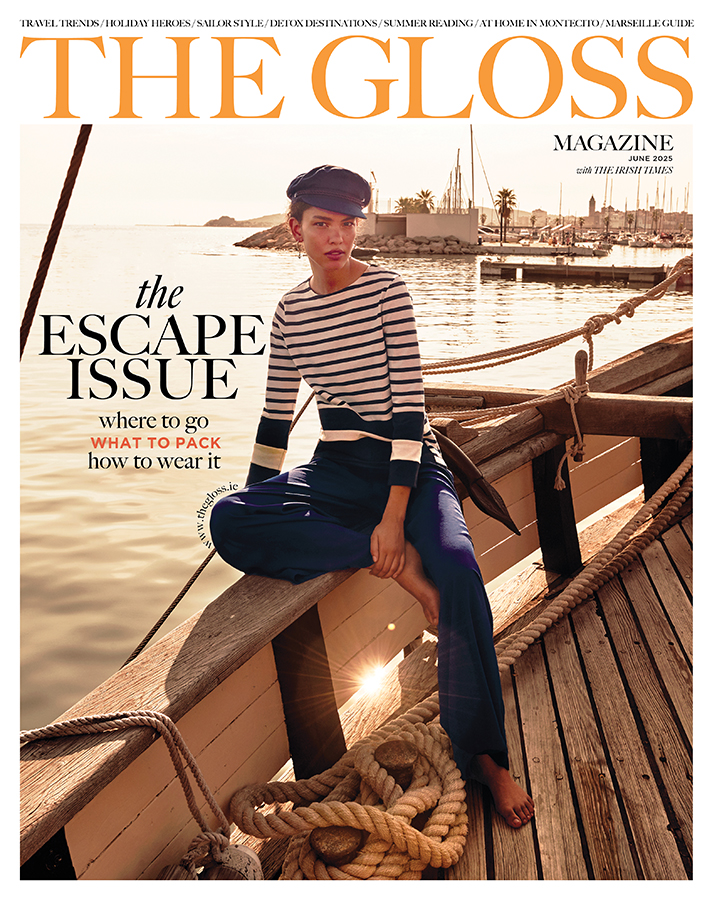Gentle arts are overlooked, says Polly Devlin …
Some of the pieces in my collection are inadvertent – one thing appears, I fall in love and then with the magic of synchronicity, another surfaces. Had it been there before the first one and I hadn’t clocked it? I don’t think so. I think my yearning and appreciation magicked it up. There we go: I am as mad as a bee in a box.
I have one cabinet filled with things not everyone could objectively call beautiful but to my eyes they are shiningly lovely. Many are made of fired clay and include misshapen pigs, swans, swans that have half turned into penguins, a pink person lying in a wavery round shallow bath about six inches across with little pointy breasts and toes above the water, a recumbent horse (“I couldn’t make his legs stand up mum so I broke them off”), all fashioned intently by my daughters’ small childish fingers. So long ago, yet yesterday.
Among this bevy of objects that I find beautiful (though talk about the eye of the beholder!) is a gruesome depiction of an execution. On a platform, a bloody axe lies below a guillotine. The centrepiece is a decapitated head in all its grisly gory. People recoil when they see this terrifying paperweight, as indeed did I. It led me to think long on the state of the mind of its creator and Blake’s wondering question about the tyger “Did he who made the lamb make thee?” The tyger in question was my eldest daughter aged six who has grown up to be a perfect person. Take heart all mothers of what goes on in a child’s mind when you make them eat up their vegetables.
A properly beautiful piece of art hangs on my office wall – it’s worked in colourful needlepoint and is a bit of a botanical puzzle, since it depicts a large bay tree in a small pot from which a rose and daisy have fallen. A clue as to this tree’s tangled genetic origin … my daughters are called Rose, Daisy and Bay.
The needlepoint picture was done by Bay when she was seven – and she toiled over it with heavy breathing and much solemn secrecy. The fact that I bandaged up her fingers when she had pricked herself with the needle over and over again was never remarked on by me, nor was her face, like Munch’s Scream, or the tears of rage and the shouts of “bloody knots” coming from the corner where she was sewing. I longed to help her but since I was not supposed to know what she was doing I hummed a little Winnie-the -Pooh hum “…. it seemed to (me) a Good Hum, such as is Hummed Hopefully to Others.”
So. All of these things I love more than life itself, and indeed they impelled me to collect samplers made by children in earlier ages, worked with extraordinary skill, with the date, their name, their ages stitched at the bottom. I marvel at their accomplishments. They were all so young. The worked words are usually of a religious bent, extolling virtue, and include proverbs from the Bible, uplifting stanzas, didactic rules of behaviour, surrounded by emblems – from churches to roses to crosses. I hope proud mothers hung these work on their walls – only it would not have been on their office wall because they would not have an office – cf. Virginia W and A Room of One’s Own.
Lavinia, a friend, still remembers a rejection from her mother with acute pain although she is now an old woman. Like me, like Bay, she was not a natural needlewoman but with the help of her nanny she embroidered a set of table mats for her mother’s birthday. Extremely proud, Lavinia gave them to her mum on the birthday morning. That afternoon she went to the village fete held in her family’s garden. There for sale, for sixpence, on the bric-a-brac stall, were her table mats.

Polly Devlin’s needlepoint bedhead.
In my big room, which once was an artist’s studio, is an enormous ottoman – with a wonderful petit point cover, an extraordinary work of art. I found it rolled up in the back of a cupboard in my mother-in-law’s house where it had been put away, maybe 60 years before. It was designed and worked by my husband’s grandmother, a talented violinist, a traveller in the Victorian sense, erudite, learned, who spoke many languages and who at the age of 70 started on this needlepoint canvas and 20 years later finished it. It’s a masterpiece (is that a proper word to use any more for women’s work?) a beguiling mix of Persian carpet patterns and almost Beatrix Potter-y like animals. I had it made up into the ottoman and it is a central piece in my collection of textiles.
Another is the bedhead in my room, a needlework image of the Jacobean house I lived in for years, and at the bottom is stitched a line from Seamus Heaney – “Bespeaking generation’s love” – with our daughters’ names and the name of the house worked in underneath. It was made in 1978 by a policewoman who had lost her job. I paid her by the week and she stitched it for over a year. Arching around the house are – guess what – roses, daisies and bay leaves.
I bewail the loss of embroidery and needlework as an everyday skill. Of course we haven’t time to sit stitching for the pleasure of it. We hardly even mend things any more. But we’ve lost so much in the loss! Even in language we move in a metaphor and welter of embroidery – the thread of civilisation, hanging by a thread, the warp and woof of history, the tapestry of events, a stitch in time, embroidering the truth. Even words for atavistic objects – the reel, the spindle, the skein – are still in use.
There has traditionally been a distinct reluctance among art historians and critics to assign artistic importance to the values associated with women and domesticity. Goes without saying: Women’s work! Embroidery, tapestry, needlepoint, quilts, have not been credited to their proper place as art. I salute artists like Judy Chicago, Eve Hess and Tracy Emin who have placed embroidery and sewing and stitching unequivocally at the centre of their art.
Women’s domestic work is a fundamental source of women’s art. When this work reaches a certain amount of skill it is called craft – to distinguish it – and to my mind diminish it – from art that does not originate in practical needs, such as painting and sculpture, traditionally done by men, always released from domestic duties, who never had to bear a child and rarely reared one.
Thirty years ago, walking through Berkeley Castle, I saw a set of chairs with embroidered backs that seemed to me the best things in the castle but they weren’t even labelled. When I asked about them, I was told they had been embroidered by one of the Countesses of Berkeley, another in a timeless line of unsung artists who gave their genius and generosity to beautify their own lives and the lives of others. Looking up the Berkerley ladies, I came upon one Countess, Louisa, who married the Earl of Berkeley in 1711. At the time of her wedding, Jonathan Swift said of her: “The chit is but 17 and is ill-natured, covetous, vicious and proud in extremes.” I’d love to think it was her who worked the fantastic chairs. Not generous at all but sewing with rage…
LOVETHEGLOSS.IE?
Sign up to our MAILING LIST now for a roundup of the latest fashion, beauty, interiors and entertaining news from THE GLOSS MAGAZINE’s daily dispatches.





